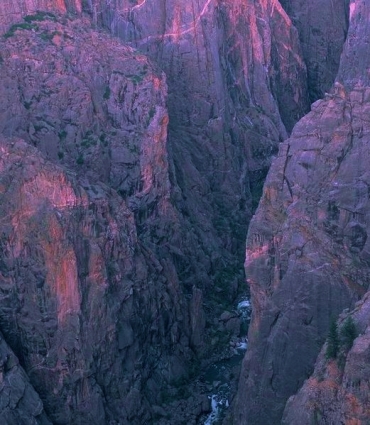
In the Lee of Night
by
Banks Miller
It stood over the land, mighty, implacable, ancient. A million years of incrustation, of new buildings and modules placed atop old, had made the city vast. Above all towered the branching shaft of The Arborescent Tower, whose crown surveyed the world from a height of a thousand fathoms. Its ancient core stood unmarred by the passage of a hundred thousand years, for it was shaped of orichalc, dark and inflexible, salvaged from ancient Heliopolis that stood mighty in the early ages of the Darkening when the sun was yet a brief and glorious giant.
In the upper Canopy level, a dozen rods beneath the highest crown, Sardios sat at his writing desk, attempting to ignore the chill as he peered through the eyepiece of a swiveling telescope apparatus. Its lens, its twin tiny cameras, its radiation collectors all gazed down into the great rent in the Earth — the Cataclysm Valley — that yawned open not a half dozen leagues from the wall of the City of the Tower.
It had been many a millennium since mankind had turned his instruments skyward to search out the secrets of the universe — that lesson had been learned repeatedly, and at tremendous cost. Some knowledge was better left unknown.
So the instruments and windows and lenses of the City — a million eyes of glass and metal and transparent orichalc — gazed down into the Great Valley, particle-traps and anemometers sensing every breeze that blew from the Valley, telescopes searching out things that moved in the Mist. The floor could never be seen, but Shapes moved on the walls of the valley — things half-human, more adapted to the thick and poisonous vapors; or crawling things grown huge in the dense air; or nameless things never seen closely or clearly by any man, but merely as rare and fleeting horrors.
Would the Valley grow habitable, in time, to man? Or was this the end? Would cold and utter night bite through the walls of the City of the Tower, before mankind could find a new home? Surely, it was indeed the end. Whether mankind survived, or not — that did not change the fact.
A civilization was dying — that Sardios knew, as clearly as he felt the chill air bite his flesh. The Sun Cities were dead, every one; and from their debris the Moving Cities had been built. They too were dead, every one; and from their last ruin, and from the wrecks of old unmoving cities, had the City of the Tower been built. Looking up from his telescope, he returned to his writing:
This is the Last. No morn will come;
The sun is too dim to rise again.
Watching the sky, a child weeps.
To be young on an old world:
What hope has Death to offer Birth?
© 2009 by Banks Miller.
The image is based on a photograph by Phil Armitage,
which he generously placed in the public domain.

